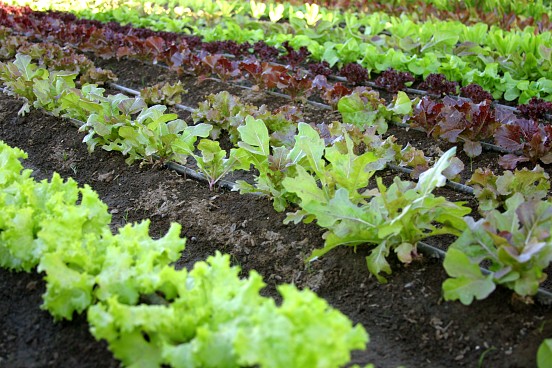Spring Vegetable Gardening Schedule for Temperate Climates
 Spring is almost here, and daylight saving time has already started. In any temperate climate, it’s time to prepare the plot for spring vegetable planting — and next year, you can probably start even earlier. Here is a quick summary of how to prepare the garden, and when to plant your vegetables.
Spring is almost here, and daylight saving time has already started. In any temperate climate, it’s time to prepare the plot for spring vegetable planting — and next year, you can probably start even earlier. Here is a quick summary of how to prepare the garden, and when to plant your vegetables.
Test the Soil
Many veggies require 8-10 hours of direct sunlight to reach their full potential. Choose a sunny spot, then test the soil. Your local Cooperative Extension office likely provides inexpensive but valuable soil tests. Click here for a national directory.
The soil test will reveal what you need to add in order to balance the pH (ideally to somewhere between 6 and 6.5) and composition of the soil, such as phosphorus, nitrogen, potassium and calcium. Even perfectly balanced soil still needs plenty of organic boosters like compost or manure; some experts suggest adding both.
Hardiness Zone Maps vs. Climate Data
While gardeners can raise beds and add compost on any warm spring day, they may have to wait to plant most of their vegetables, even in fairly temperate climates. Planting times vary by vegetable and by location.
Many gardeners swear by the U.S. Department of Agriculture hardiness zone map to determine their planting schedule, but I find the Technicolor explosion a little overwhelming, and I live in northern Colorado, which is a particularly confusing patch of the map.
Instead, I go by the climate data to estimate the likely last plant-damaging frost. The Victory Seed Company offers this simple listing of average first and last frost dates for a handful of cities in each state.
Vegetables You Can Plant Before the Last Frost
Hardy vegetables such as kale, leaf lettuce, parsley, spinach and turnips can all be planted from seed 4-6 weeks before the last expected frost. On the same date, asparagus, broccoli, onion, rhubarb and other seedlings can be transplanted if they got a head start indoors. About 2 weeks later, cauliflower and Chinese cabbage can be transplanted, and beets, carrots, parsnips and radishes sown from seed.
Get these cool-season vegetables in the ground early, particularly in hot climates. Lettuce plants can be very productive in late spring and early summer, but they will go to seed and no longer produce tender leaves once it gets too hot.
Wait to Plant These Vegetables
Other vegetables are more tender, and can only be planted after the last frost, when the soil temperature tops 55 degrees Fahrenheit. These include tomatoes, snap beans, sweet corn, summer squash and zucchini. Finally, the least cold-tolerant plants can only go in the ground when the overnight temperature is consistently above 50 degrees F. These include eggplants, peppers, cucumbers, okra and pumpkin.
With proper site preparation and a good planting schedule, you should have a successful spring vegetable garden. Every region and microclimate has peculiarities, however. Consult your local Cooperative Extension office or a professional gardener near you for invaluable information on vegetable planting in your area.
Updated December 11, 2018.
Looking for a Pro? Call us (866) 441-6648

Landscaping Average Costs
Landscapers Experiences

Yard Clean Up Left Our Lawn Looking Fantastic

Tree Removal For The Last Part Of A Poor Old Mulberry



